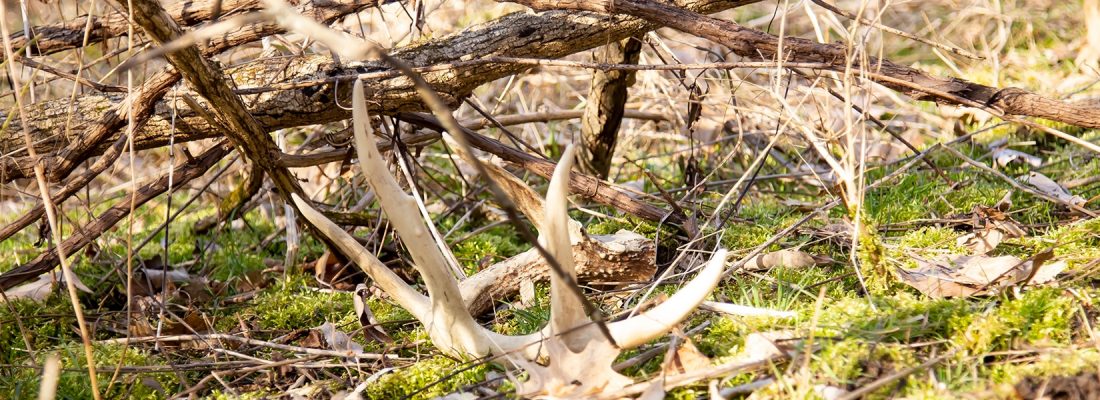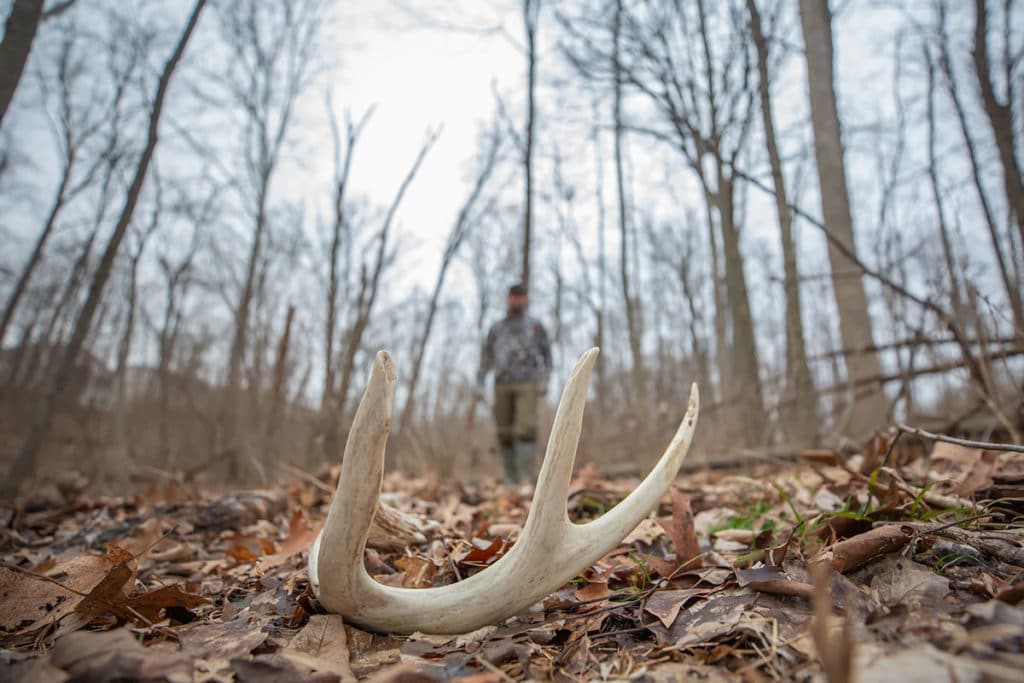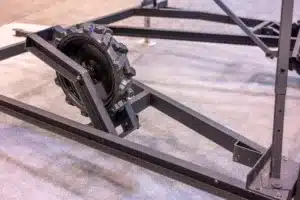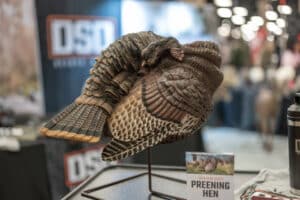No products in the cart.

365 Archery 3D Archery Targets
When folks enter a new industry, or even a new subsection of their industry, they usually dip their toe in by offering one or two

Blog / Field Updates / Shed Hunting Tips

Shed hunting has become wildly popular over the last few years. I remember when I first started looking for antlers, I had no idea what I was doing, but I also remember that I rarely ever ran into another shed hunter in the woods. Today, I often cross paths with other hunters and non-hunters alike who are searching for the proverbial “needle in the haystack”. On paper, the thought seems to be “more shed hunters, less sheds.” That makes sense, right? In theory, it does. But in reality, there are many a shed hunter who pickup and drop the hobby all in the same year. The fact of the matter is, antlers aren’t always easy to find. Especially when you don’t have the natural funnels and destination food sources that some enjoy. The key to finding more antlers, in my opinion, is preparation.
For many shed hunters, one of the greatest limiting factors to our success is time. I personally have a schedule between work and kid’s sports events, where I am only able to get out a few times a year. As a result, I have to be extremely intentional in where and when I look for antlers.
WHEN Some may view this as a gamble, but I generally wait until the beginning of March to start looking really heavily. I have picked up plenty of antlers in January and February, but there are always a high percentage of the deer in my area that are still holding one or both of their antlers well in to late February. If I had more time, I would certainly start looking earlier, but I have to pick when I can go, so I pick a time that I know there is a greater chance of more antlers laying on the ground. Even if this means there is a chance that other shed hunters might get to the antlers before me, not to mention the squirrels and mice! In addition, trail cameras, just like they are during deer season, can be a valuable tool to help you determine when deer start dropping.
WHERE This might be one of the most important components of shed hunting success. Too many shed hunters simply get out and go hiking in the hopes that they will stumble into an antler. If you have unlimited time, and you really enjoy hiking, this isn’t a terrible idea. But as I’ve already mentioned, I am limited on my time, and so I approach my shed hunting the same way I do any hunting. I search miles and miles of ground, but I do it from the comfort of my home using onX Maps. More on this topic in the next section…
I’ve talked to a few people who have scoffed at the idea that you can be successful shed hunting by using aerial imagery to aid in your search. But let’s take a step back and think about it for a minute. If you want to kill a big buck in the early or late season, there are a few critical pieces of information you need to know (unless you are extremely lucky). You need to know where the deer lives, where he feeds, and the path he takes to get from spot A to spot B. By having this information, you can position yourself to ambush him going to food, or returning to his bed. Seems easy enough, right? So why would we not use this same approach to looking for his antlers. The only difference is, I don’t have to encounter the deer at a single point in time, I only need to search where he HAS been.
So what exactly am I looking for with Aerial scouting? I am looking for probable bedding areas more than anything else. Especially in areas where there are not large destination food sources that congregate deer into a small area, your best bet is to search the areas where a deer spends most of his time. In the winter months, this is without a doubt his bed. In addition to increasing your odds of finding antlers, aerial scouting this time of year also provides a great opportunity to scout areas you would otherwise be cautious to walk through during the hunting season.

The moral of this story is simple, you can’t find what isn’t there. Meaning, you won’t find antlers in an area that doesn’t have any antlers, and you are unlikely to find antlers in an area that doesn’t have fresh sign (beds, active trails, fresh droppings, etc). A lot of shed hunters get hung up on areas that are full of rubs and last years scrapes. These areas are great for hunting the rut, but not so great for hunting antlers. This is old news, and it is not indicative in any way shape or form of what the deer are doing in the winter months. What I key in on more than anything when I am shed hunting is fresh beds, fresh tracks, and fresh droppings. These bits of sign are the key indicators that a deer is frequenting a particular area, and without it you can rest assured that you are not looking in the right place.
Now i’m not saying you should abandon your search the instant you walk into an area and don’t find the sign you are looking for. Deer certainly change their habits from year to year, and what they did one year does not mean they will do the same the following. But go into a particular area with a game plan. Maybe do a perimeter search looking for active trails leading in or out of a place you expect to hold deer. If you don’t find what you are looking for, make one or two passes through the area looking more closely for beds and other recent deer sign. If you continue to find nothing, pack up and head someplace else. Once you find the place you are looking for, you will know it. And then it is time to get serious.
Considering the fact I’ve already established I am crunched for time most years, this might seem like a contradictory tactic…it is not. Quite the opposite in fact. Because I have such limited time, I want to make sure it is not wasted. That is part of the reasons I have become a fan of aerial scouting before hitting the woods, but I have also encountered situations in the past where walking to fast has almost cost me an antler.
When I am shed hunting, I like to walk slow and I like to stop every 40 or 50 yards and turn to look in all directions. I cannot tell you how many times I have walked right past an antler and only picked it up because I was able to see it from a different vantage point. Or maybe, I simply walked past it because I was going too fast. Antlers are hard to spot sometimes, and the easiest way to avoid walking past an antler is to be slow and methodical in your search.

Just because you have searched an area does not mean you shouldn’t search it again. I learned this lesson several years back after picking up my biggest antler to date, after searching the same area 3 different days. The only difference is that on day 3, I had approached this little river bottom from a different direction. Low and behold, not 20 feet from the same trail I had walked down 2 days prior lay a 90 3/8 inch antler. How could I have missed this you might wonder? Simple, the antler had rolled up next to a fallen tree right in the middle of a large brush pile. Piggybacking off the notion that you should constantly stop to turn and look around, sometimes the key is to approach an area from multiple direction. Sometimes, you might be surprised what you discover.
Building on the theme in the two previous sections, it is not just where you search for antlers but how you search that sometimes makes the difference success. When I have found an area that has all the sign I am looking for, I like to grid the area. What I mean by this, I will break the area up into a small manageable section, and I will walk back and forth usually 30 or 40 yards apart from my last route. Of course, if you are she hunting with a buddy, this is not always necessary. It goes without saying, sometimes there just aren’t any antlers to be found. But sometimes, implementing a more thorough search method can yield big results.
Last but not least, the most important part of finding antlers is, well…finding antlers. You can do all the right things, look in the right places, and still, sometimes it is just hard to pick out the antler in a mess of fallen trees and branches. There is definitely something to be said about training your eyes to spot an antler. The curve of a main beam, the straightness of a tine, even the luster of the antler as compared to a branch. There are a lot of things that after a little practice, you will get better and better at spotting them.
One of the best things I can recommend is that each and every time you go shed hunting, take an antler with you. Periodically, toss the antlers over your shoulder, or over a hill (does not matter so long as it is out of sight), and then look for it. You’ll be amazed at how many times you know the antler is there, and yet you still have trouble finding it. Do this enough times, and you will get quicker and quicker at spotting it. However, be forewarned, I have lost 1 or 2 antlers doing this. It has been a long while, but it has happened.
In summary, shed hunting takes patience, it takes time, and it takes persistence. Don’t plan on going out and finding an antler every time you step out of the house. In fact, plan on more trips where you don’t find an antler than when you do. But stick with it, keep your eyes peeled, and be sure to look for the sign. Shed hunting can be just as frustrating as any other hunting, but that first time you go out and pick up 5 antlers in an hour…you’ll be hooked for life! Most important, if you haven’t already been out looking, it’s not too late. Get out there, and good luck!

When folks enter a new industry, or even a new subsection of their industry, they usually dip their toe in by offering one or two

Highlights of Greylight’s new releases for 2024 – the Daybreak Blind, Transformer Tower, and Nomad trailer.

With one of their coolest decoys to date, the NWTF floor was buzzing with talk of the new DSD Preening Hen decoy. It’s almost TOO
Don’t miss a thing! Subscribe below to keep informed on everything that’s happening with the folks at SELFILMED.com
One Response
Real good information.